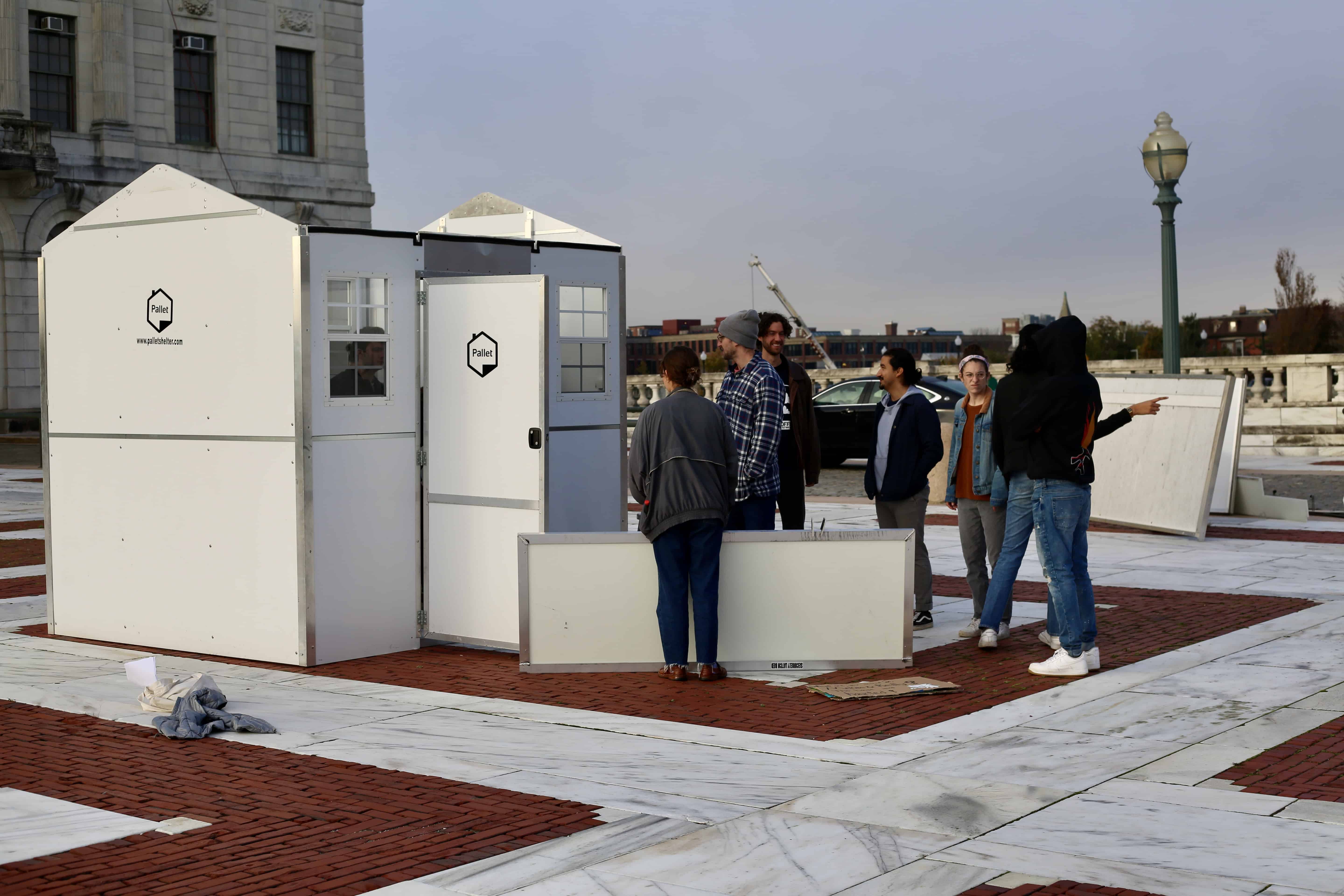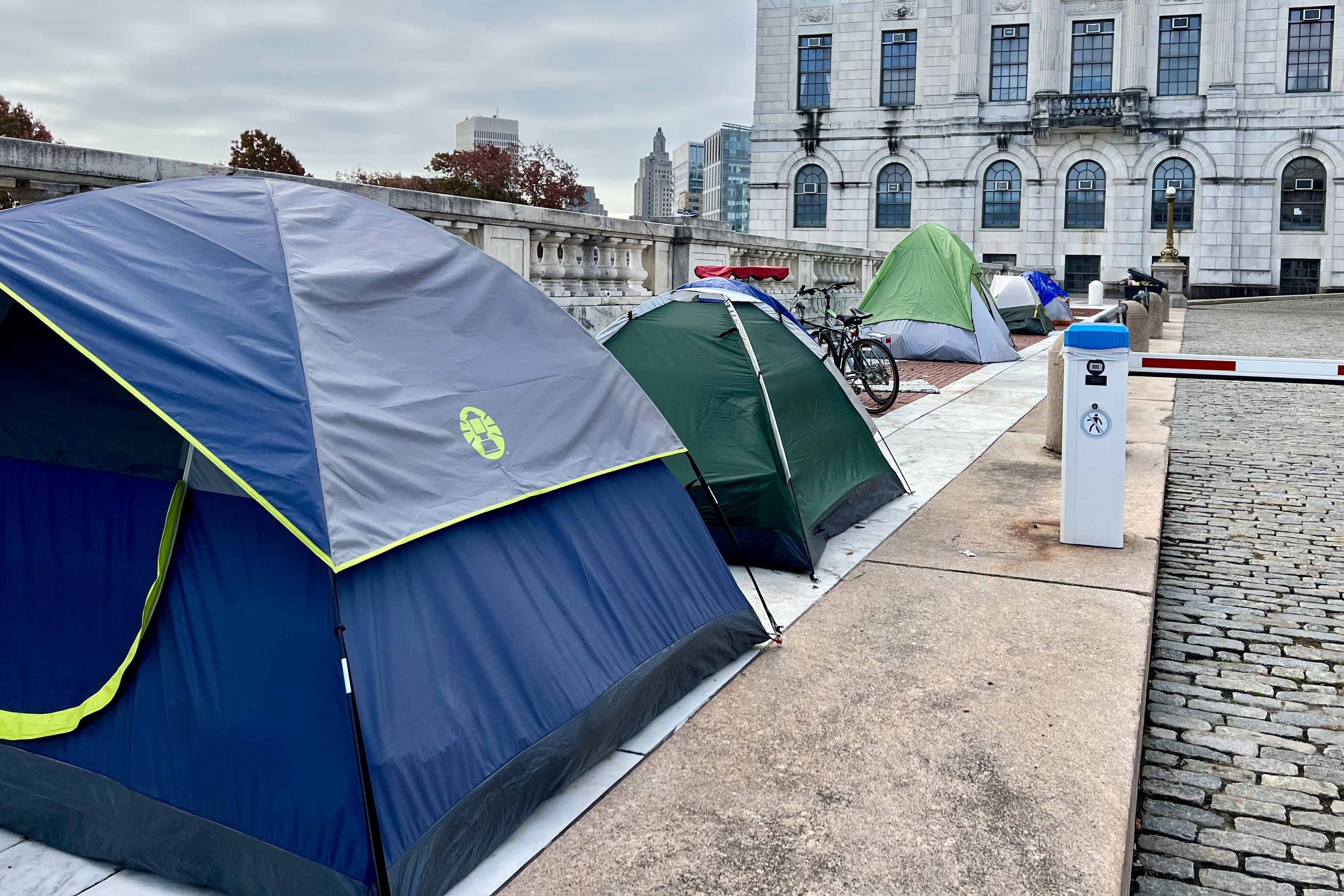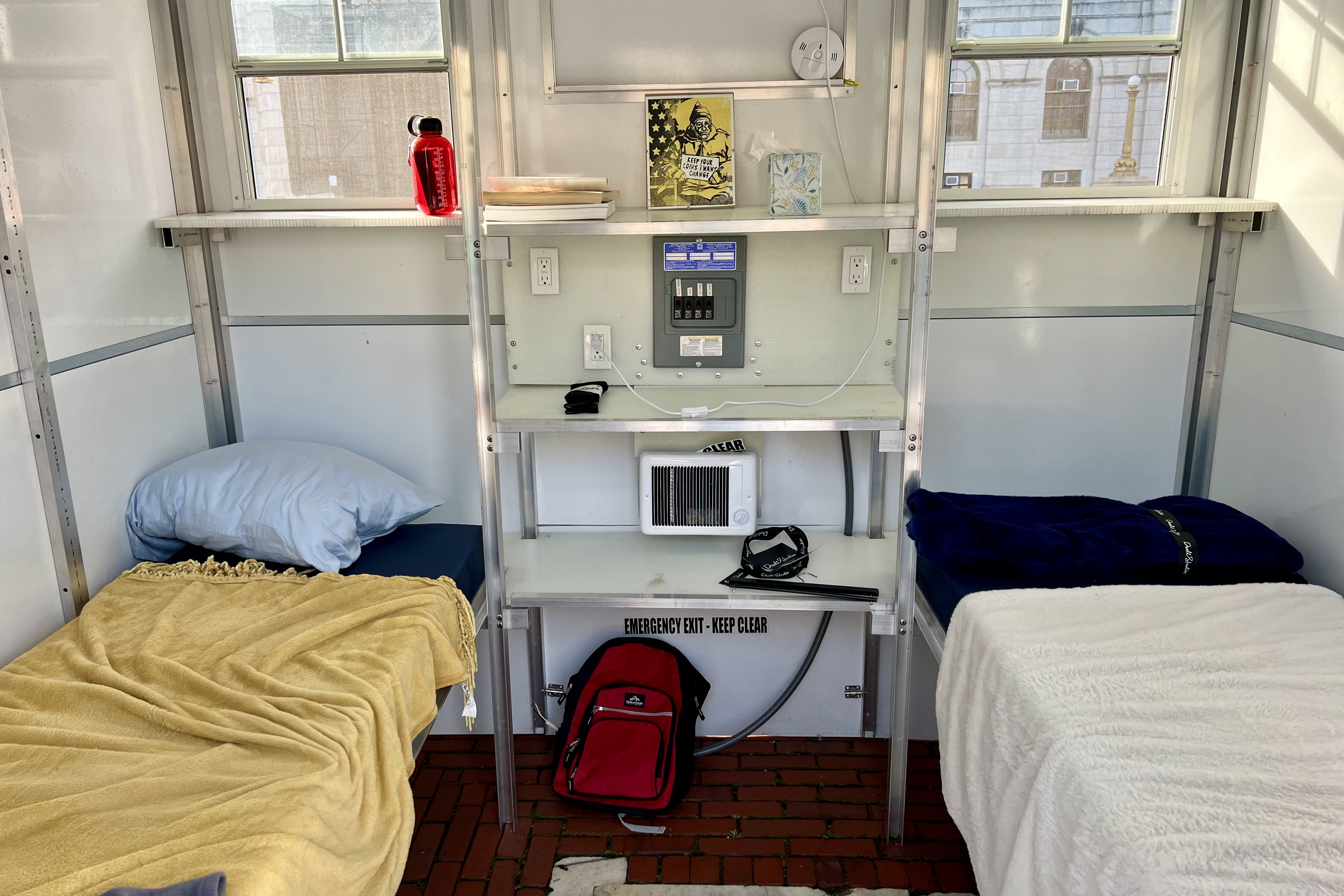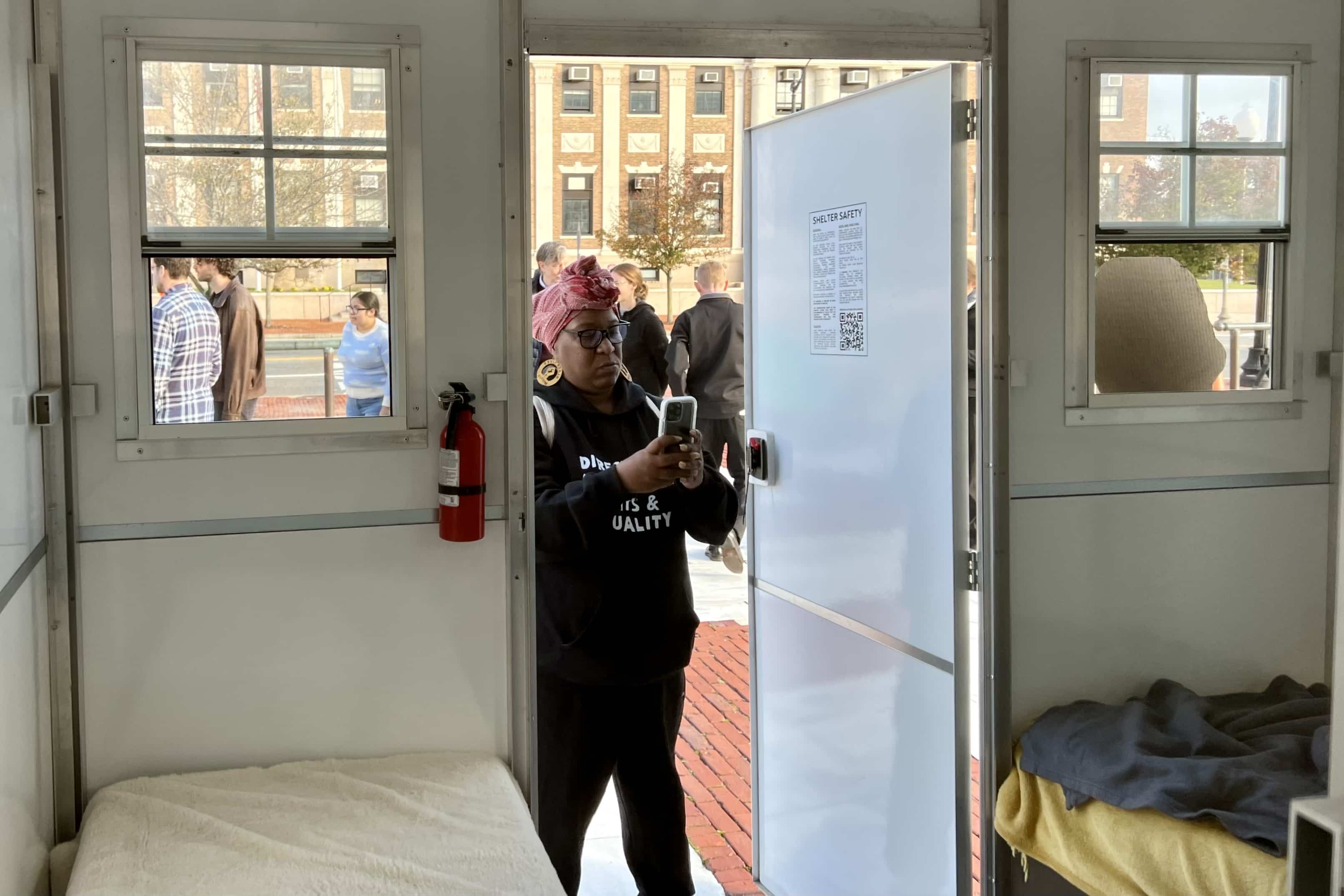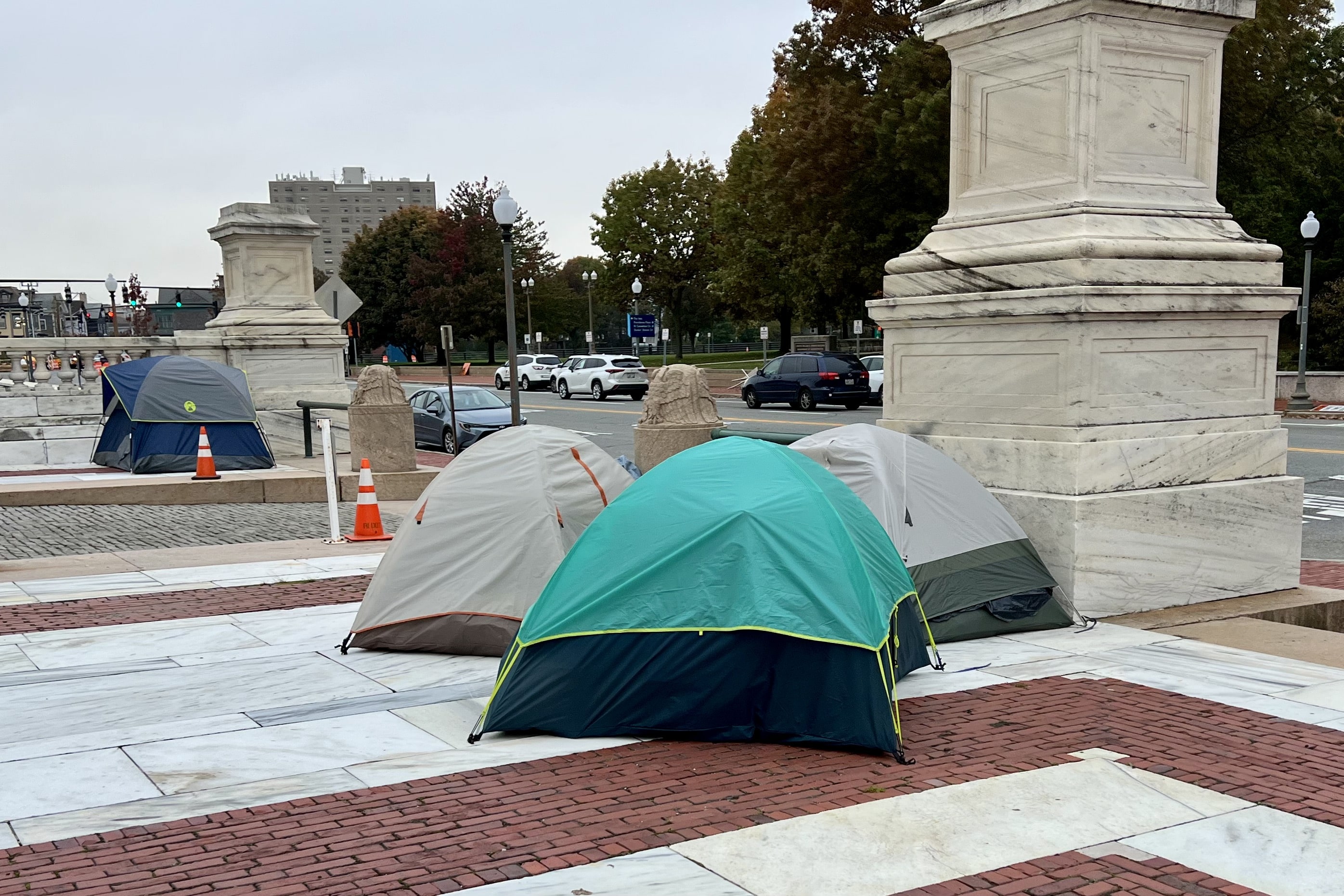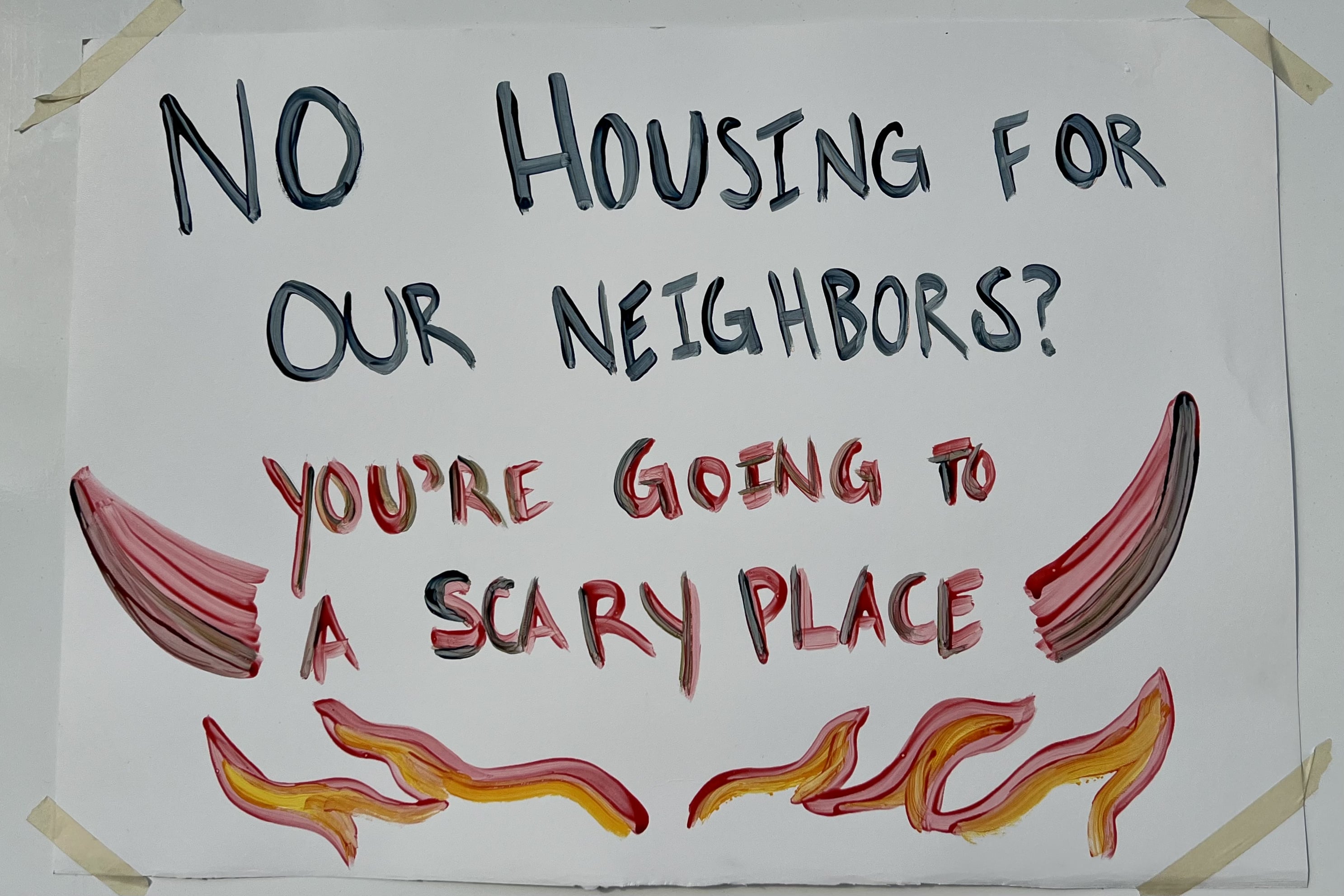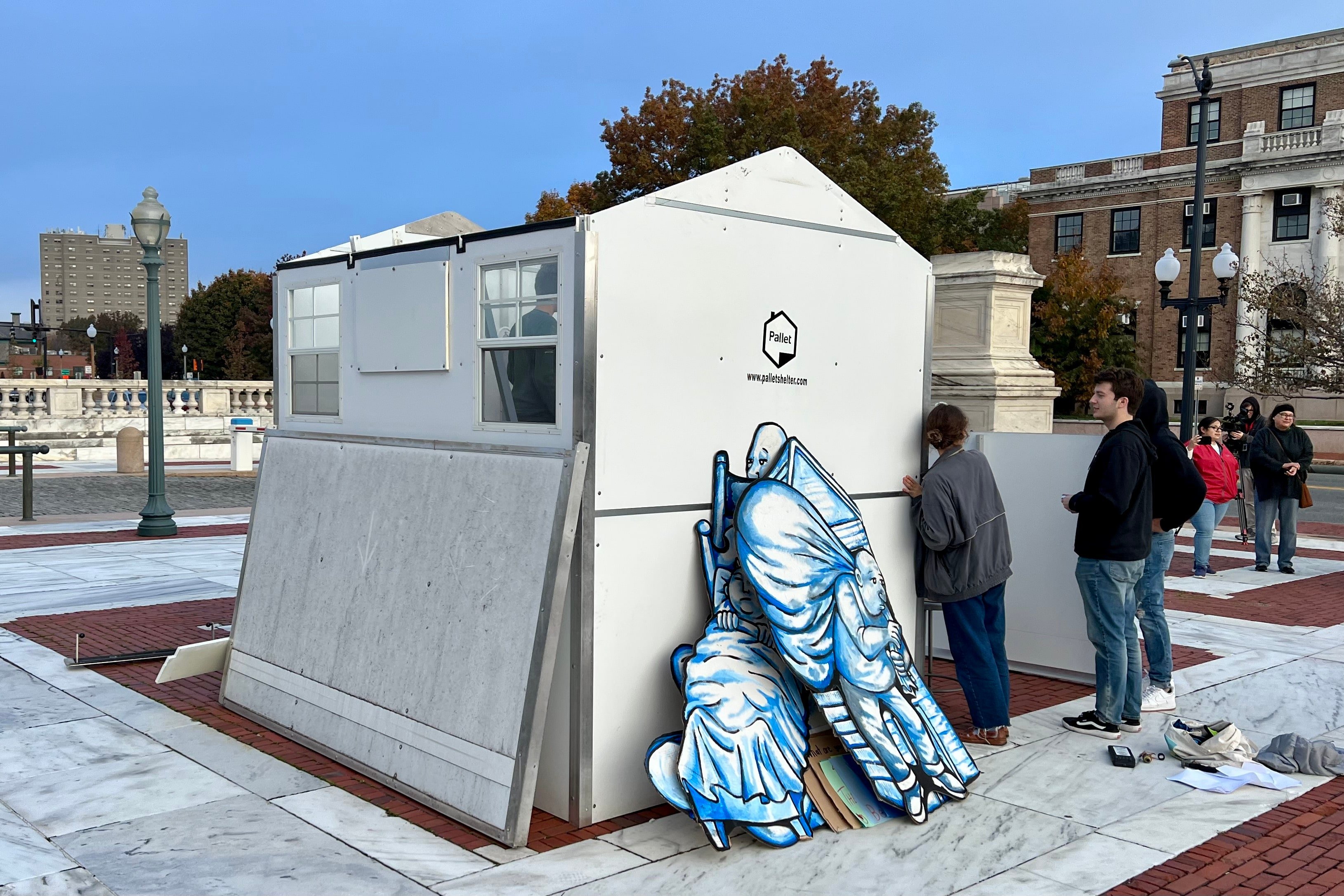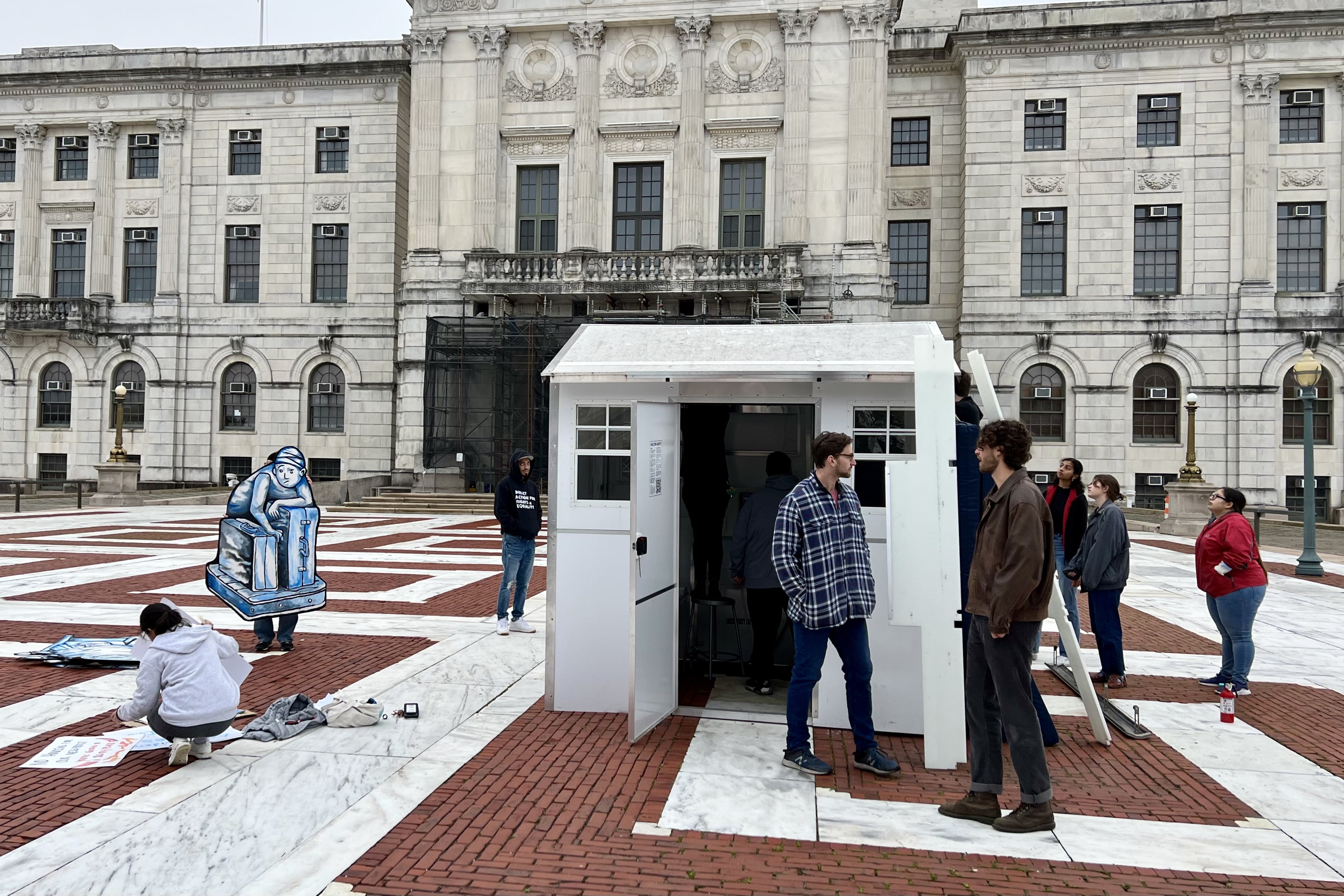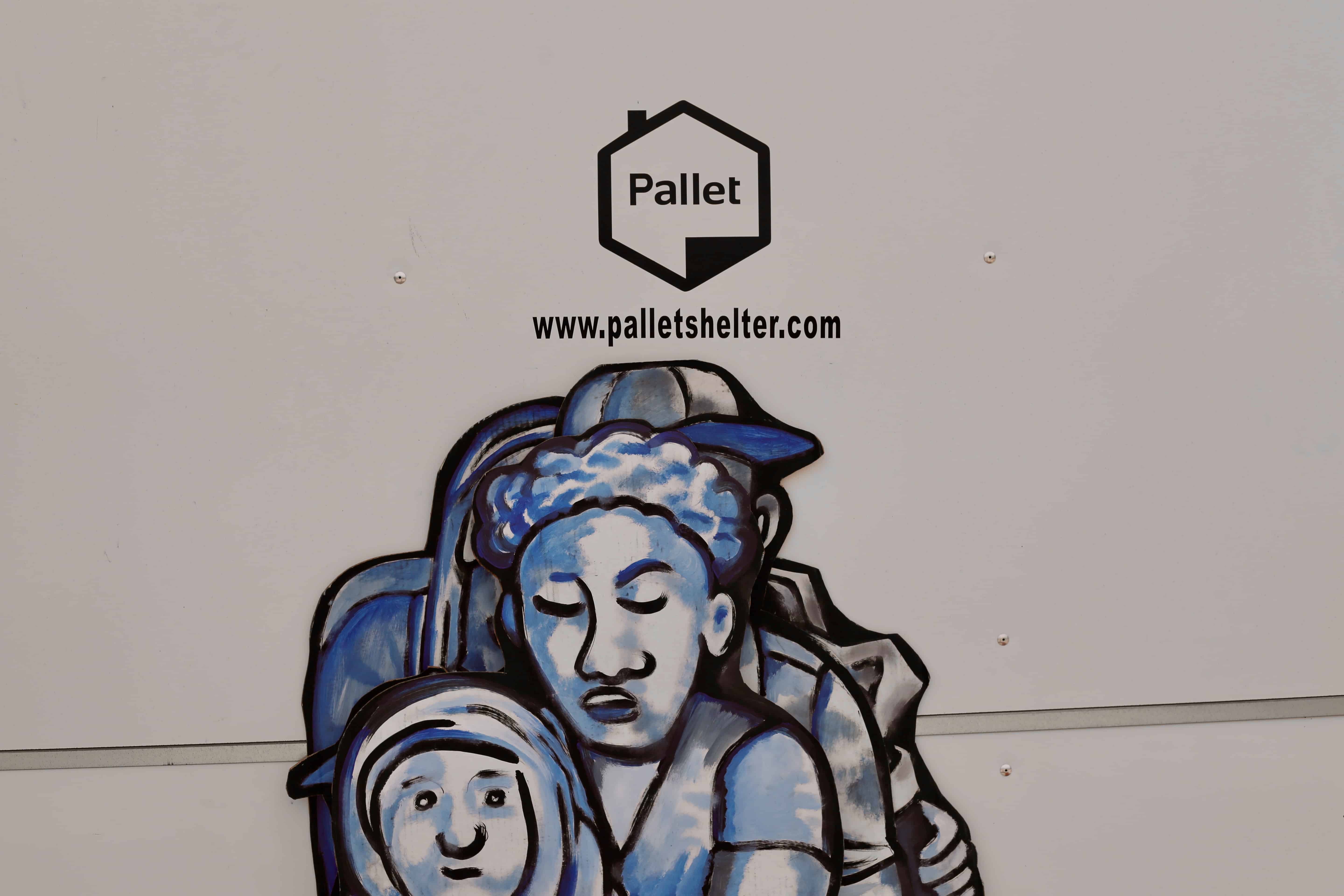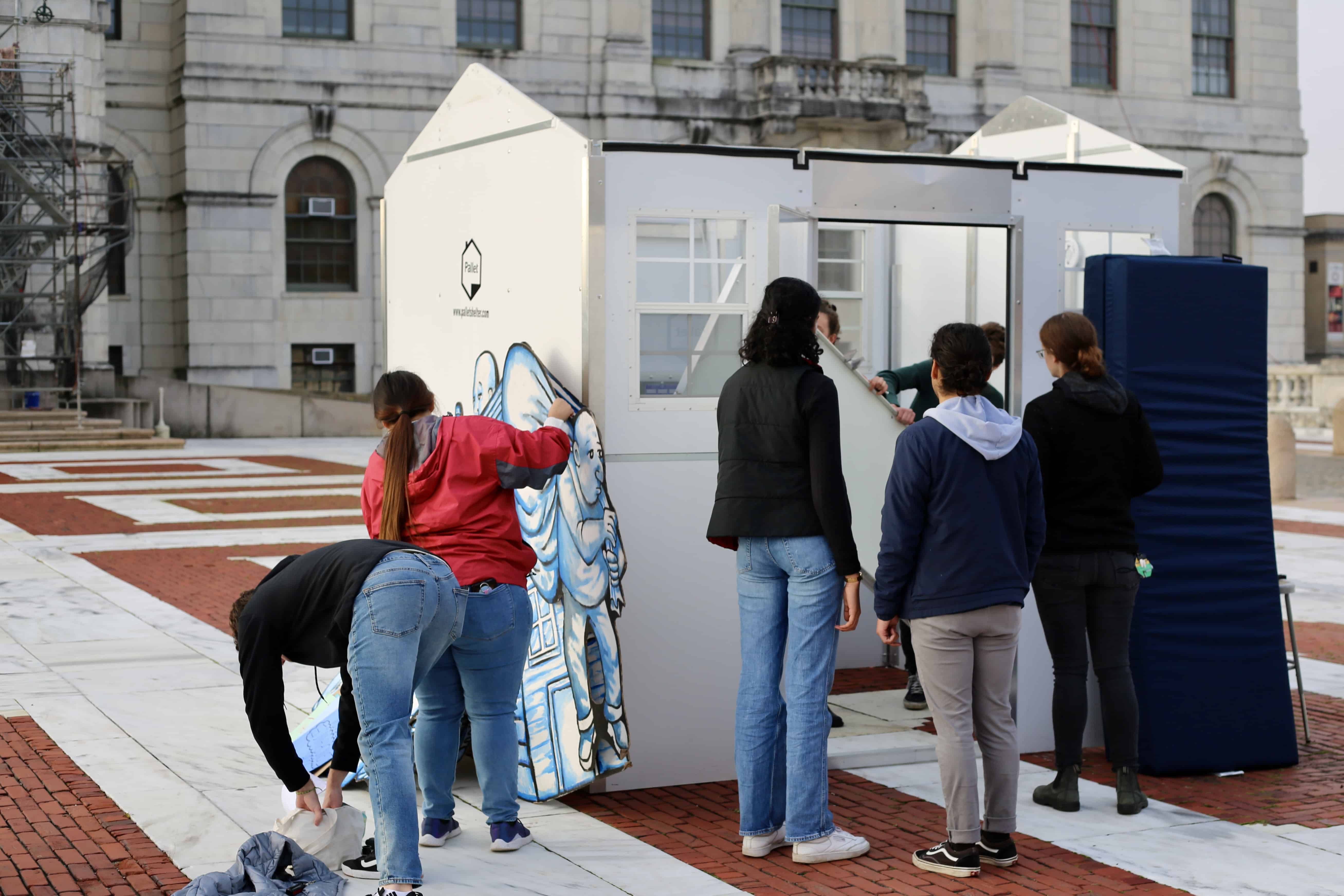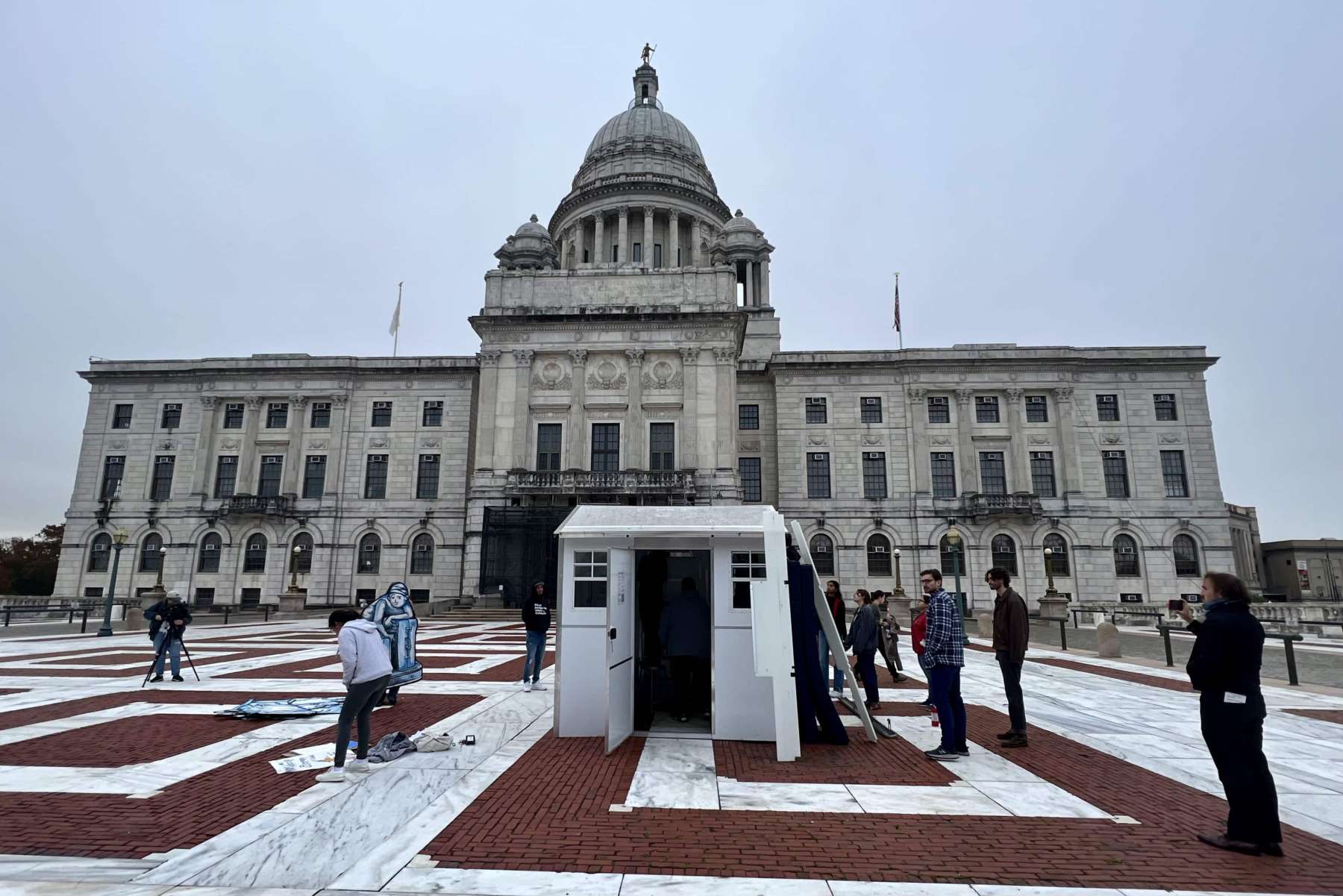Pallet shelters offer solution to homelessness, but space is needed
The pallet shelters have heat and electricity, and would be erected in groups where additional shelters with showers and bathroom facilities would be located. There would be 24/7 wraparound services provided. This would be a big improvement over sleeping in tents.
October 31, 2022, 11:40 am
By Steve Ahlquist
Those who have experienced homelessness and activists from the Rhode Island Homeless Advocacy Project (RIHAP), Housing Opportunities for People Everywhere (HOPE), and Direct Action for Rights and Equality (DARE) constructed a rapidly deployable shelter on the State House Plaza on Monday, Halloween. They demanded that the governor forcefully address the unsheltered homelessness crisis by finding sites and erecting these shelters ahead of the freezing temperatures coming this winter.
Last year, at least 42 people experiencing homelessness died in Rhode Island.
According to the state’s Homeless Management Information System, in the two weeks ending October 22nd, 435 individuals have been reported as living outside in Rhode Island, including 59 households with children. These numbers continue to increase, and they are likely undercounts as we do not have sufficient outreach workers to contact all of those living in the estimated 80+ encampments in the state. Those needing shelter cannot get it because there are hundreds on waiting lists for emergency shelter as winter approaches.
See also: HousingWorks RI: Affordable housing out of reach for most Rhode Islanders
“As a state, we are now institutionalizing unsheltered homelessness as winter approaches,” said Professor Eric Hirsch of Providence College, Co-Chair of the state’s Homeless Management Information System Steering Committee. “Prior to the COVID-19 pandemic, we generally had under 100 people staying outside. Since the beginning of 2022, that number has increased to 435. We need Governor McKee to address this urgent crisis by finding sites for rapidly deployable shelters now. If people had lost their homes due to a hurricane or a fire, they would not be left outside with nowhere to go.”
Presently there around 11 tents set up outside the State House where unhoused people are living. One person living in those tents told Uprise RI that they would prefer a pallet shelter to their present accommodations.
Uprise RI asked Professor Hirsch about the number of available shelter beds in the state.
“There’s just over 800 shelter beds. We feel we need another 500,” said Professor Hirsch. [The McKee Administration] “has put in place a plan to add about 230, but those are coming online fairly slowly.” Hundreds of unhoused persons are on waiting lists for shelter beds in Rhode Island.
The pallet shelters have heat and electricity, and would be erected in groups where additional shelters with showers and bathroom facilities would be located. There would be 24/7 wraparound services provided. This would be a big improvement over sleeping in tents.
“It is not at all reasonable to even try to live like this. And no reasonable resource [is being provided] to change these facts,” said Robert Coffey, who is currently experiencing unsheltered homelessness. “The … pandemic was treated as a crisis, while … the [increase in the] unsheltered homeless population is not. The numbers are the greatest I’ve ever known. How is this not being considered an emergency? How many have to suffer before enough is enough? And yet, winter is still on the approach. Imagine all of these prospects then, when it’s 10 degrees outside and too late.”
Advocates demand that Governor McKee:
- Immediately find sites and begin assembly of rapidly deployable emergency shelters. The number of new shelter beds just opened has fallen far short of the hundreds that are needed;
- Fast track the provision of $2.8 million in flexible funding to facilitate the housing of 420 individuals and families who would otherwise enter the emergency shelter system. Housing problem solving programs have a proven record of success in Rhode Island;
- Execute a well-planned and funded path for unhoused constituents to be placed in permanent housing. Therefore, the Governor must find creative ways to quickly create 500 new permanent supportive and deeply subsidized housing units; and,
- Spend the hundreds of millions of federal dollars that are available to fund these initiatives. It’s time to address this urgent crisis.
The most recent plan to erect 30 pallet shelters, on state land in Cranston, was opposed by the Cranston City Council. Sadly, said Professor Hirsch, the process of finding a place to put these pallet shelters has been difficult due to residents who don’t want these shelters near their home.
